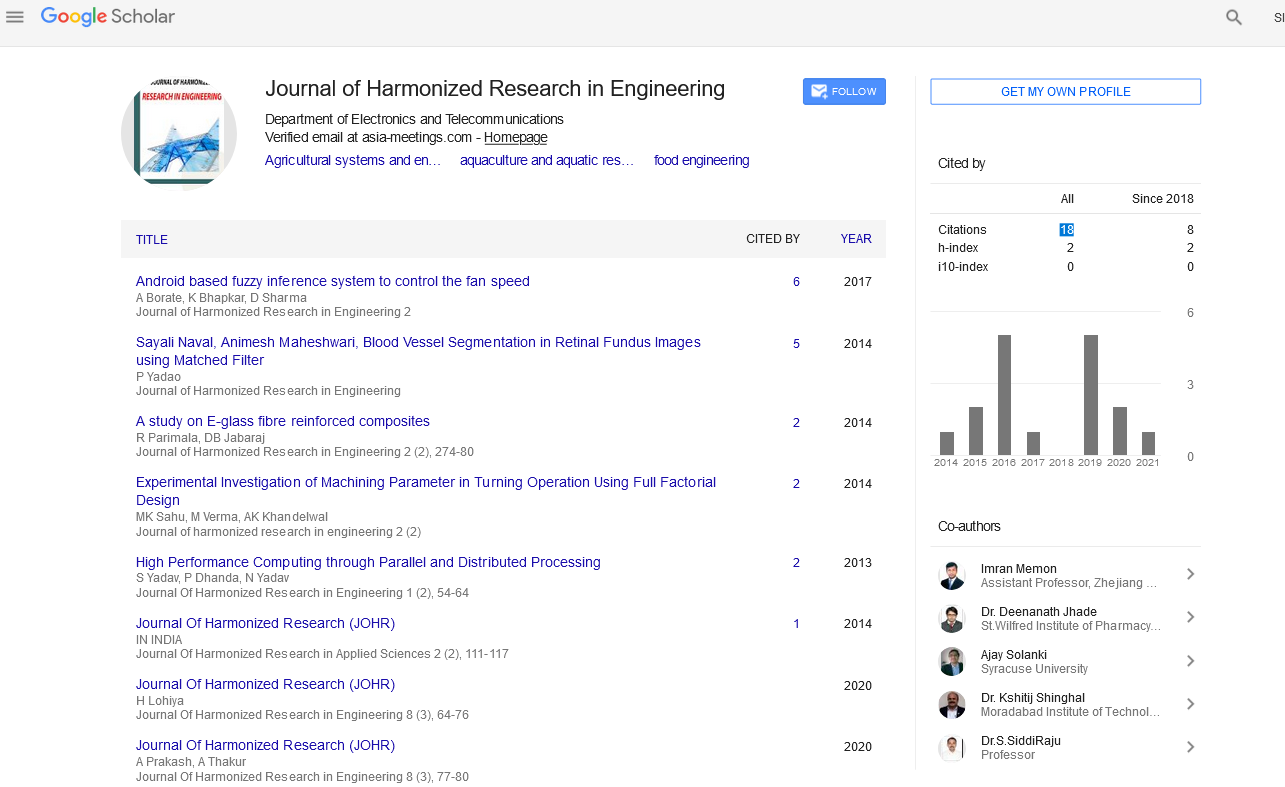Commentary - (2022) Volume 10, Issue 1
TRANSPORTATION TECHNOLOGIES HEADING TOWARDS FUTURE
Stanley Vardhanapu*Received: Mar 02, 2022, Manuscript No. JHRE-22-62063; Editor assigned: Mar 07, 2022, Pre QC No. JHRE-22-62063(PQ); Reviewed: Mar 21, 2022, QC No. JHRE-22-62063; Revised: Mar 28, 2022, Manuscript No. JHRE-22-62063(R); Published: Apr 07, 2022, DOI: 10.30876/2347-7393.22.10.195
Description
New technologies are helping humans to get from point one place to other place more efficiently than ever ahead. Innovative transportation tech is similar as independent vehicles and e-bikes are today’s new born technology, inventions in transportation technology are basically born out of three essentials: efficiency; ease; and safety. Scientists and transportation industry professionals work side-by-side to ensure that these new technologies get further people (or things) to their destination quickly, safer and with the smallest quantities of resources possible.
As technologies like data science, manufacturing and deep learning became more advanced, these fields act as the backbone for everything from independent vehicles to aerospace trip, and indeed function as the base for transportation platforms because of the enormous implicit these technologies hold, transportation technology has become one of the quick-growing and largely contested fields in the world. Thousands of startups are contending to produce the “coming big thing” in the world of transportation. Innovation in transportation technology is at an each-time high with creative results that are helping humans to get down the block, across the country or globe and indeed into external space.
Hyper loops
Hyper loops are a proposed system of passenger or freight transportation that uses electric propulsion and low- pressure tubes to glide along at speeds that surpass those of marketable aircrafts. The use of magnets to propel the passenger tube significantly reduces the amount of energy and financial costs; it takes to operate the technology. Hyper loops are still in their infancy with top speeds reaching only half of the proposed 750 mph and still, they are being put to the test as feasible choices to traditional travel styles in the near future.
Underground tunneling
Underground transit, popularized by Elon Musk, is exactly how it sounds; moving people or effects through vast systems of tunnels underneath the Earth’s surface and enclosed except for entrance and exit common at each end. A pipeline is not a tunnel though, some recent tunnel hav used immersed tube construction techmiques rather than traditional tunnel boring techniques in town. Underground tunneling, however in its early stages it is seen as an interesting conception that has the implicit to reduce traffic congestion and overall environmental effects of current traffic situations.
Aerospace
The transportation technology garnering the utmost excitement right now is Aerospace. Companies like SpaceX, Blue Origin and Virgin Galactic are battling it out to be the first company to offer marketable space flights.
Autonomous vehicles
Companies like Google, Waymo, Uber, Tesla and Ford are each machine developing companies, AI and deep learning platforms that help cars calculate their surroundings in real-time and act consequently, these vehicles are taking in millions of data points each alternate through a variety of detectors, software and GPS. Detectors constantly cover surroundings (like people crossing roads, surrounding vehicles and animals darting out into traffic) and make split-alternate computations on how to respond safely and efficiently. Also, GPS monitors routes to find the quickest way to a destination, forthcoming accidents or backups that can be subverted.
Last mile robots
Rather of relying on a delivery driver or postal worker to drop off the item at your front door, companies are now employing robots that traverse cities and glide down sidewalks to deliver your package straight to your door. Amazon and FedEx are presently employing robots in certain cities to deliver packages within a many mile radius of their fulfillment centers, and Domino’s Pizza is using robots to deliver their pizza orders on time.
Electric vehicles
Electric vehicles are having a massive effect on how we get around, whether it’s across the city or across the country. Tesla and Nissan have popularized the electric car, which runs strictly on battery power to get us to where we need to go. Rather of refueling at a gas station, electric vehicles need a battery charge to get them back on the road. Today’s most advanced electric vehicles can run from 150 miles to 350 miles on a single charge. These vehicles are fantastic examples of transportation tech because they are fundamentally changing how vehicles operate and how they are powered.

Google Scholar citation report
Citations : 43
Journal of Harmonized Research in Engineering received 43 citations as per google scholar report









